| ROCK-POOLING AND LOOKING
FOR THE SHONEY? Text and photographs by David Marshall Photograph
of Sue and David Marshall by Paul Barrow Twinning logo devised by Dick Mills
The
morning of Sunday 12th September was absolutely beautiful as our next Twinning
event took a small band of members from STAMPS and Ryedale A.S. to the pier at
South Shields for a very special morning.
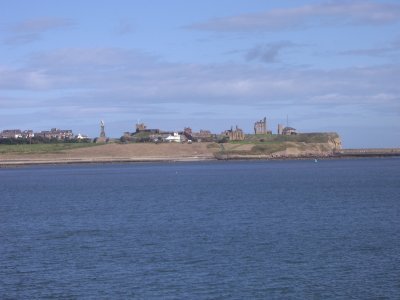 | On
such a clear morning the view over the bay from South Shields pier to Tynemouth
Priory was stunning. |
Paul Barrow had organised a rockpool
trip and had gone to much trouble making sure everything was right, including
health and safety aspects, for what would be a very interesting 'creature hunt'. 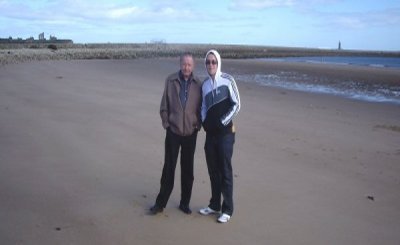 | | As
our photograph of John Douthwaite and grandson Daniel Charters shows the area
we had chosen to sample is quite extensive. |
The mounded area
around the pier is dotted with rockpools and, as we would find out, many of the
rocks here are well anchored into incredibly soft sand. For such a large stretch
of beach things were incredibly quiet so only passing Swans and aircraft distracted
from our task.
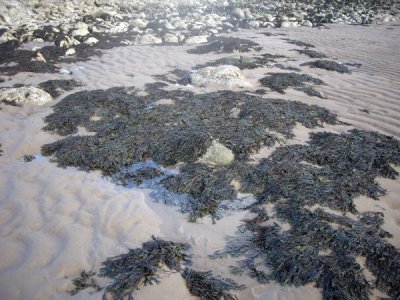 | | 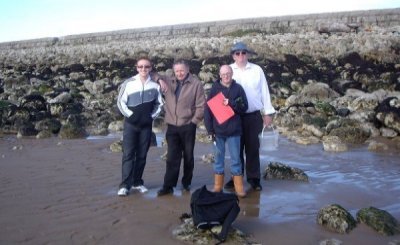 |
A typical rockpool at South Shields Pier | . | John
and Daniel are joined by Paul Barrow
(rear of our photograph) and
Mark
Lyons as our 'creature hunt' begins |
Our task was not
easy as we enthusiastically raked through watery sand and turned over rock in
pursuit of whatever creatures lurked in the pools.
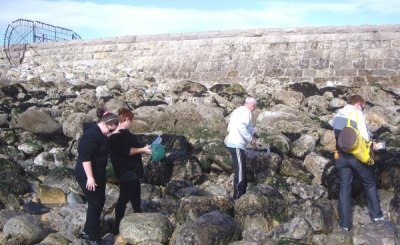 | | 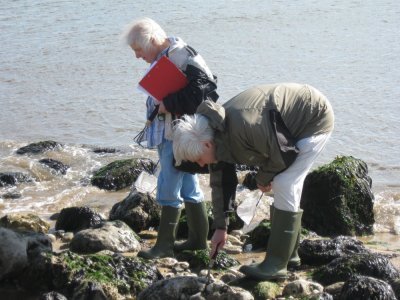 | Wendy
and Amy Charters plot their next move while Bede Kerrigan is in for a nasty surprise
- the bite of a not very hospitable Crab. | | Sue
and David Marshall busy at work. |
After much searching
we managed to uncover a couple of small fish, several Crabs, a living Starfish,
large shells complete with occupants and brilliantly coloured red anemones. As
we finished this part of our morning Amy carefully placed all of the creatures
we had found back into places of safety.
 | Some
of our 'creature catches' |
For the second part of our
morning we conducted a survey of seaweeds found both in the rockpools and upon
the beach. We had hoped to record 13 species and note their preferred environment
and how abundant these species were? We found several of the targeted species
but Paul was disappointed, and concerned, that we were unable to record all 13.
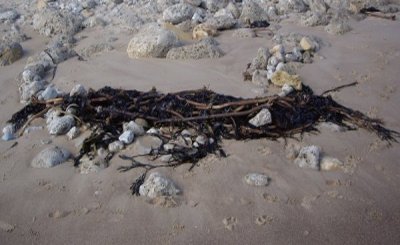 | | 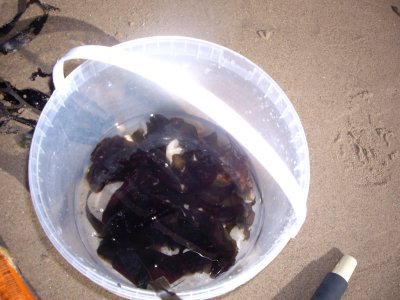 | Seaweed
on the beach | | Seaweed
in a collecting bucket |
Finally, we conducted a survey
of how many Limpets could be spotted in 60 seconds. The two surveys were
not conducted light heartedly and the information they revealed will be forwarded
to the British Museum of Natural History as part of their national survey - the
results of which you can find upon their website.
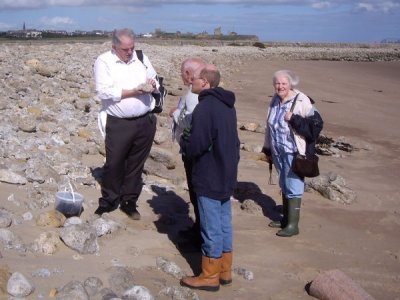 | As
we prepare to leave the beach Paul tells members of our party all about the geology
of South Shields beach |
As we said our 'see you soon',
and the STAMPS members departed for home, our day was not quiet over. Bede took
Sue, Mark and myself down the coast towards Whitburn. This gave us the chance
to visit the infamous Marsden Bay. As readers of The Aquarium Gazette CD magazine
are aware (see the article on modern day Sea Dragons by Richard Freeman in Issue
15) this Bay is alive with grizzly stories and has witnessed more sightings of
the Shoney (a mythological/unknown water serpent) than any other area of the Sunderland
coastline. You would be extremely lucky to see the Shoney but what you do find
are amazing rock formations and a pub/café (with an amazing history) built
into the cliff face. Our thanks to Bede for taking the time to show us around
some beautiful coastline.
 | 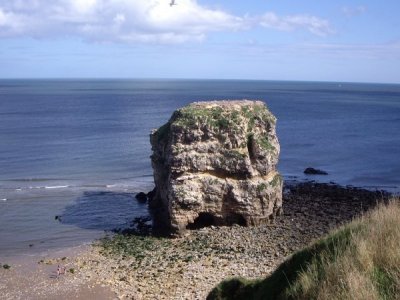 | The
café in the rock at Marsden Bay. | A
rock formation at Marsden Bay. |
The great thing
with 'Twinning Days' is that they allow you to have wonderful times like today
and cement friendships. Thank you to Paul and his fellow STAMPS members for the
wonderful day we had.
.
|